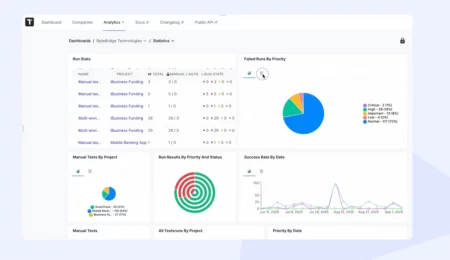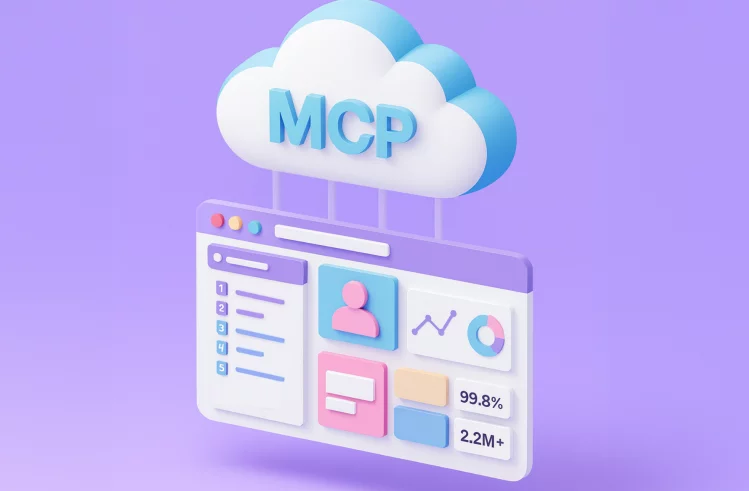The world of software development is always trying to find better ways to work and create high-quality results. Two key methods in this area able to reshape your vision are Test-Driven Development (TDD) and Behavior-Driven Development (BDD).
Both methods highlight how important it is to include test efforts early in the software development process. However, they focus on different things and have different ways of working. This guide will help you understand TDD and BDD. You will find out which method is best for your software development needs.
Understanding the Basics of TDD and BDD
Software development should always be approached as a structured process aimed at delivering the best solution. DDD, TDD, and BDD each offer valuable perspectives that can be effectively combined within the Software Development Life Cycle (SDLC) — or used dependingly on the context and project needs.
- DDD defines what to build and why by focusing on the business logic, domain language, and problem space.
- BDD defines how the system should behave based on the client’s view, involving business and non-technical stakeholders in its formulation using a simple common language form.
- TDD helps developers build the system incrementally, making sure that every part of the program is placed correctly. Developers write unit tests for the logic behind the behavior, then implement the code to make the tests pass.
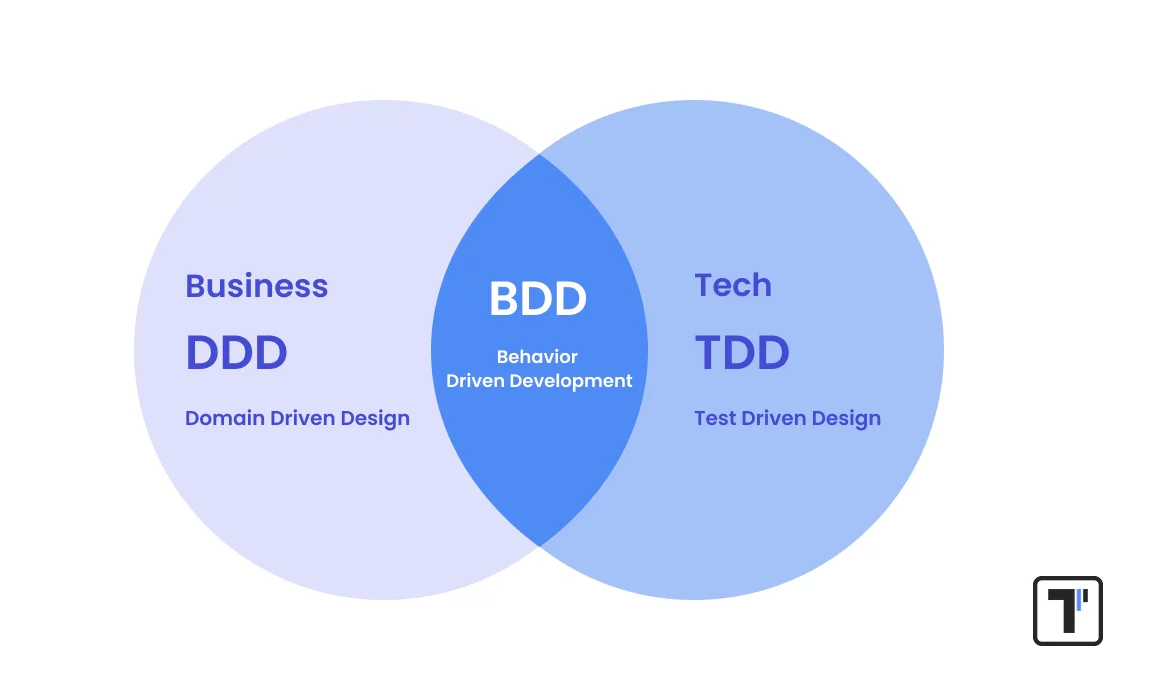
Historically, BDD builds upon the TDD methodology, grounding development in acceptance testing scenarios. However, an equally important component is the concept of DSL (Domain-Specific Language), which is derived from DDD (Domain Driven Design) – a natural language understandable to all participants in the process, enabling the combination of the task statement, tests, and documentation.
The founders of the BDD approach highlight that they consider BDD primarily as a means of improving communication between the development team and the business. Dan North explains BDD as an extension of TDD practices, shifting from using it within the developer environment as a common language for all project stakeholders, and decodes the last D as development: end-to-end software development. So, let’s clarify these two definition now ⬇️
👉 Test-Driven Development (TDD)
Test-Driven Development (TDD) is a method for creating software that includes testing throughout the process. In TDD, developers first write tests before they create the actual code. This practice ensures every part of the code gets tested. The process includes three steps: writing tests, making them pass, and improving the code. This cycle leads to better software quality, fewer bugs, and improved code design. It helps to make the code stronger. TDD tests are often automated and focus on specific features. You can compare it to setting up a safety net before trying to walk on a tightrope.
👉 Behavior-Driven Development (BDD)
Behavior-Driven Development, or BDD, focuses on how an application should work from the user’s point of view. It encourages teamwork among developers, testers, and business stakeholders. BDD user stories are written in a simple style, like Gherkin syntax. This makes it easy for everyone involved, both technical and non-technical stakeholders, to understand. By giving clear examples, BDD helps to ensure that the software meets business goals. There are BDD frameworks, like Cucumber and SpecFlow, that aid communication and keep good documentation. This is why BDD is a popular choice in agile software development.
Diving Deep into Test-Driven Development (TDD)
Test-Driven Development (TDD) is very important in the software development process. In TDD, developers write tests first and then write the code. This practice helps keep the code correct and improve software quality. TDD tests look at each small part of the code, making it essential for developers.
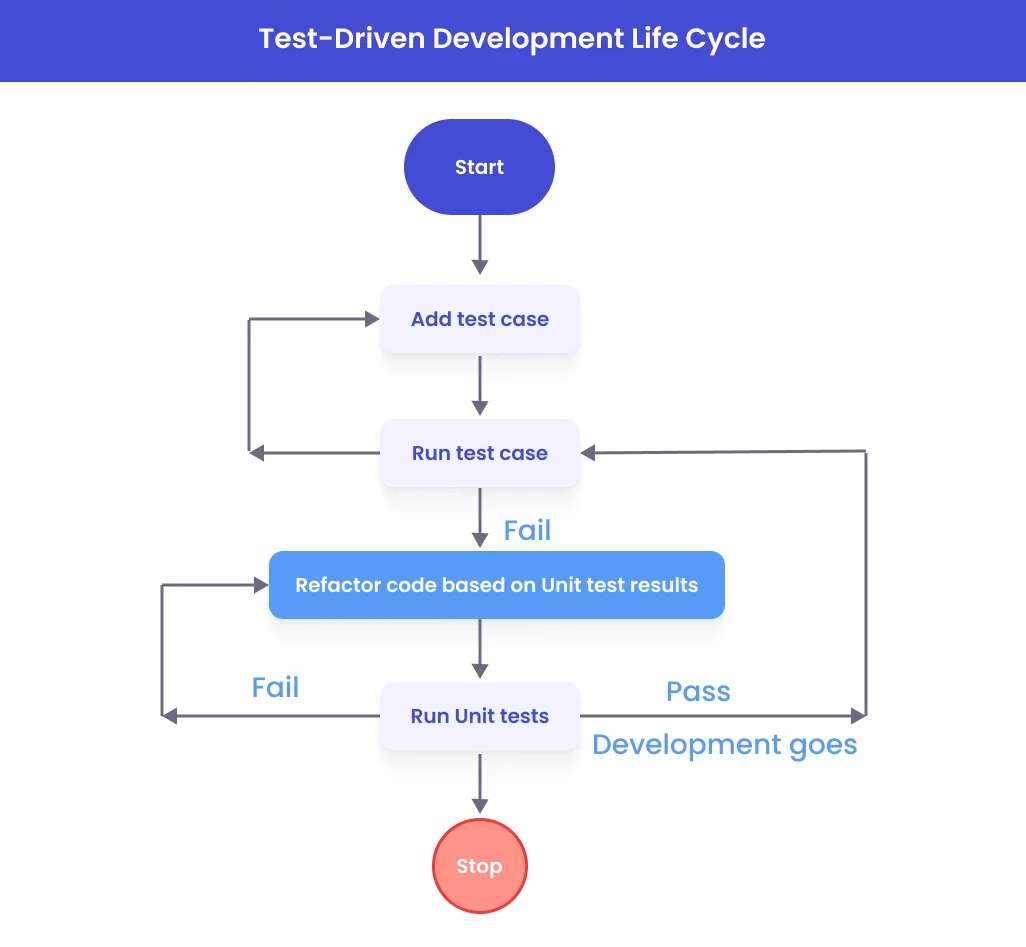
By running the tests often, TDD helps developers find and fix issues early. This leads to stronger and bug-free software applications. Also supports agile software development methodology.
Core Principles of TDD
Test-driven development (TDD) has important principles:
- The main one is the test-first method. This means you begin by writing a test that describes how the code should function. Only after that do you create the code itself. This approach gives developers a clear target. It also helps ensure the code works properly.
- Focus on behaviour, not implementation. Tests describe what the system should do, not how it is done. This encourages better design and flexibility in implementation.
- Principle of simplicity. TDD encourages developers to write the simplest code to make the test pass. This means they should avoid adding changes or features that are not needed right now. The goal is just to meet the requirements of the test.
- Keep your test suite fast and isolated. Tests should be independent for quick runs and to avoid stubs in development.
- Refactor with confidence. TDD focuses on repeating a cycle. In this development practice, you write tests again and again till they does not pass. You run these tests, fix the code to make them pass, and then make the code better in design and readability. This method helps you make steady progress and find problems quickly, so they can be fixed fast.
Advantages of Implementing TDD
Implementing TDD in your software development process has several benefits. The goal advantage is higher software quality. When you test each line of code well, you have fewer bugs in production. This leads to a more stable and reliable product. It also improves customer satisfaction and reduces costly bug fixes later on.
Another great benefit is that it saves time on regression testing. A full set of automated tests lets the development team check quickly if code changes have caused new bugs or broken current features. This gives developers more time to add new features and improve the product. Here are more benefits:
- Lower development costs. When there are fewer bugs, it takes less time and money to fix them. This saves costs in the long run.
- Better code design. Writing tests first makes developers think carefully about how they design their code. This leads to better code that is easier to manage, change, and reuse.
- More confidence in the codebase. A well-tested codebase makes developers feel sure when they need to change or improve things. They do not worry about causing problems.
- Efficiency of regression testing. A full set of automated tests lets the development team quickly check if code changes have caused new bugs or broken current features.
- Improved documentation. Tests serve as live documentation. They clearly show how different parts of the system should work.
Common Challenges and Solutions in TDD
Implementing TDD has many benefits, but it also brings some challenges. A major challenge is the learning curve. This is especially true for team members who are new to the software development process. Writing tests requires a different mindset and a strong understanding of how the code should work. Another challenge is the temptation to take shortcuts when deadlines are near. It might feel easier to skip tests or write them later, but this goes against TDD.
Here are some ways to manage the challenges of TDD:
- Give good training and support. Spending time on training helps team members learn TDD practices. It can help them get through early challenges.
- Start small and improve. If the team is new to TDD, they should start with small, simple modules. They can then slowly use TDD for more parts of the code.
- Work together. Encourage pair programming and code reviews. This allows everyone to share knowledge and follow TDD rules better.
- Ask for assistance. There is a large TDD community online. Many resources can help teams deal with challenges they face.
Exploring the World of Behavior-Driven Development (BDD)
Behavior-Driven Development (BDD) builds on TDD but shifts the focus to the behavior of the system from the user’s perspective. It is a method for business stakeholders and developers to work together, describing user needs in natural Gherkin syntax. This ensures that the code is right and meets business goals. By using real examples of what is needed, BDD helps team members communicate better. Popular BDD frameworks like Cucumber and SpecFlow are used because they are easy to read and promote stakeholder involvement.
BDD’s Approach to Software Development
Behavior-Driven Development (BDD) begins with discussions rather than technical facts. Teams work together to decide how the software should act based on the user’s perspective. Instead of just testing code details, BDD asks, What should this system do for the people using it? The goal is to ensure the system behaves as expected in real-world scenarios. In process, BDD Live Documentation reduces the risk of misunderstandings and helps you clearly understand the system’s functionality. Specifications are written in a natural language format called Gherkin.
Givensome starting situation,WhenWhen something happensThenThen this is what should result
For example:
Given a user is logged in,
When they click "Log Out,"
Then they should be taken to the login page.These tests show the steps in a scenario, explaining what a user does and how the system must respond. You can automate the tests and run them with tools like Cucumber and SpecFlow. They provide ongoing feedback about how the software works and ensure it follows the planned scenarios.
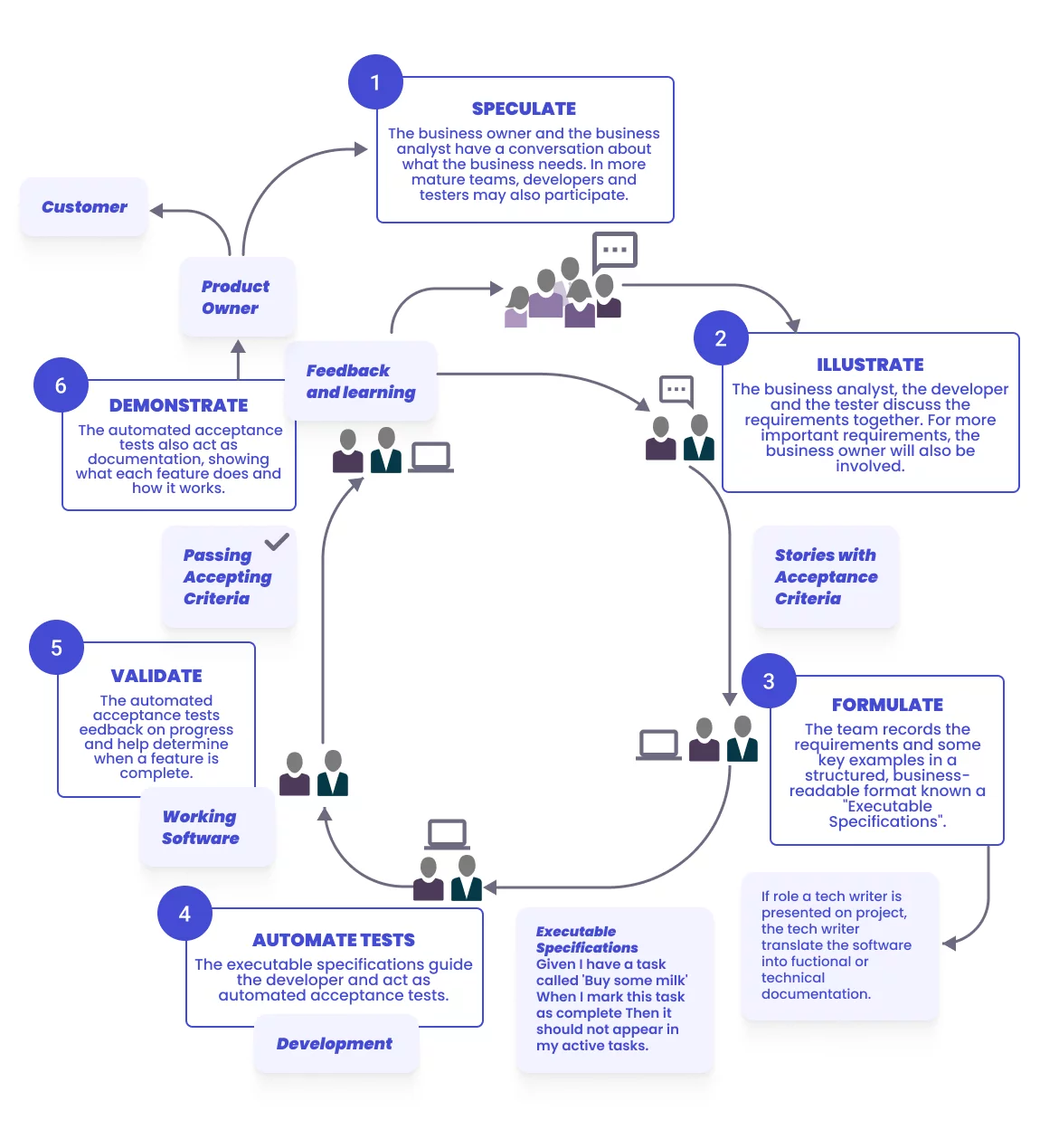
Three Amigos collaboration helps to uncover hidden ideas, clear up what is necessary, and make sure everyone knows what to expect.
Benefits of Adopting BDD Practices
BDD offers benefits that are more than just improved software quality. It connects business and technical teams, which boosts the chances of achieving the best results for their business goals. This means the software genuinely meets users’ needs, focusing on them, and allows us to create a better experience. Consequently, it boosts the probability of achieving the best results for their goals.
Here are more reasons why many software development teams prefer BDD:
- Better Teamwork. When everyone works together to define scenarios and acceptance criteria, it helps them better understand the project requirements, which reduces the chances of misunderstandings, making working on development smoother and quicker.
- Less Rework. By defining clear standards from the start, BDD lowers the risk of creating the wrong product. This helps to save money by reducing repairs later.
- Stronger User Focus. BDD always considers the end user. This leads to software that is more user-friendly and valuable.
- Easier Documentation. BDD scenarios serve as active documentation. They provide a clear and simple understanding of how the system works.
Overcoming Obstacles in BDD Implementation
Embracing BDD can be tough. A key issue is getting all team members, such as product owners, business analysts, testers, and developers, to understand and agree on the BDD process. This change needs everyone to think differently. They must be committed to working together and communicating well.
Another problem is choosing the best BDD frameworks and tools. There are many options, and each one has its benefits and drawbacks. It’s important to select tools that match your project and your team’s skills. This choice helps BDD work effectively.
Here are some useful strategies:
- Define roles and responsibilities clearly. It is vital to understand who is responsible for what in the BDD process.
- Training and sharing knowledge. Providing effective training on BDD practices and tools supports the change.
- Start small and improve. Begin using BDD in a small project or a specific area of your work. This allows you to learn and enhance your approach.
- Be open to experimenting. Different BDD frameworks address different needs. Trying out new tools can help you discover what works best for your team and project.
Comparative Analysis: TDD VS BDD
With a good understanding of TDD and BDD, you might wonder which one is better. The truth is, TDD is one small part of XP. BDD has grown to be broader than s/test/should/, because it’s trying to solve a broader problem. Both approaches have their own advantages. They can also be used together effectively in a project. Instead of viewing them as competitors, consider their strengths and how they support each other.
Shortly,
→ TDD is about ensuring that each part of the software functions properly through small sections of the code
→ BDD focused on making software that meets what users need and brings value to the business.
Key Differences Between TDD VS BDD testing
| TDD | BDD | |
| Focus | It is about a technical implementation — does this code work as intended? | BDD is about the system’s behavior — does it do what users need it to do? |
| Who’s Involved | Developers write tests | Stakeholders, including non-technical teammates, business and users |
| Scope | Unit tests — small, specific checks of individual code pieces | End-to-end scenarios include the whole system’s levels, including unit tests too. |
| Language | Different programming languages and testing frameworks (e.g., JUnit, pytest) | Gherkin, with tools like Cucumber, which is then linked to automated tests |
| Goal | Ensure code correctness | Validate software against business requirements |
Case Studies: Successful TDD and BDD Implementations
BDD is getting more popular in agile software development. It helps people work and talk better together. This matches the goals of Agile. Many companies are using BDD with tools such as Cucumber and SpecFlow. This teamwork reduces rework and produces software that meets user needs.
Many success stories show how useful TDD and BDD are in real life. Big companies, like Google and Microsoft, use TDD to improve their code and make their work faster.
Open-source projects on platforms like GitHub are good examples of TDD in practice. They show how developers from various backgrounds use TDD ideas, regardless of the programming language. For instance, Python developers can find useful TDD examples in data analysis libraries.
Conclusion
In short, both Test-Driven Development (TDD) and Behavior-Driven Development (BDD) have their own advantages in software development. The best choice depends on your project’s needs and how well your team works together. Understanding the key points and challenges of each method can help you decide wisely. By looking at successful case studies and the differences between TDD and BDD, you can improve your development process. This change can lead to better results.
Frequently asked questions
What are some popular tools for TDD and BDD?

Popular tools for TDD are JUnit, NUnit, and pytest.
If you are looking for good BDD options, Cucumber and SpecFlow are popular choices.
Both tools use the easy-to-read Gherkin syntax.
For Ruby lovers, RSpec provides a complete framework for TDD and BDD concepts.
Can TDD and BDD be used together in a project?

Combining Test-Driven Development (TDD) with Behavior-Driven Development (BDD) is a powerful method in agile development. BDD helps in making acceptance tests for features. Meanwhile, TDD ensures that the code in those features is of high quality.
How do TDD and BDD fit into Agile methodologies?

TDD and BDD are great for agile software development. TDD breaks user stories into smaller parts that can be tested. BDD emphasizes teamwork between stakeholders and test engineers. Together, they help outline user stories and ensure that each story meets a high standard.
